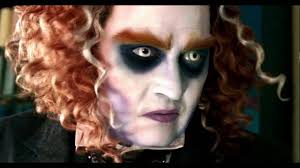In this video I read out of Fixing the Brain Book 1 – restoring order to brain disorder. Looking for and fixing the causes of ADHD, Autism, Dementia Disorders and more! https://www.youtube.com/watch?v=I150rBwNi58
Introduction
Sometimes, to solve a micro problem we have to look at the macro—that is, get the big picture. Focusing on the presenting symptoms and problems does not always illuminate the underlying causes. Take, for instance, the following analogy of a sticking door in an older home. The problem is that the door won’t close properly. The symptoms present like this: The door gets stuck closed; won’t close completely at all; scrapes the floor as it swings open; chips and rubs the paint on the door jamb. Looking at the micro, we see that the door just doesn’t fit the frame…So we cut the door bottom to match the floor angle and we shave the door edge to stop the infernal sticking. Problem solved! Or is it… Less than a year later we are discouraged to find the door sticking once again and rubbing the floor in its operation. So, we once again treat our problematic symptoms by removing the door and cutting the bottom edge shorter while trimming the edges yet again.
If however we were to take a step back from the door problem and look around at other symptoms, we find that our nearby window sticks also; there is a crack in the ceiling plaster and above the door; the floor actually slopes slightly to one corner of the room (you notice this is where dropped marbles and bouncy balls collect); oh, and rats are now living beneath the house. At this juncture we can either keep treating the growing list of symptoms one-by-one on the micro level, or we can look at the macro level for causes. With the big picture in mind, we see that the actual collection of symptoms indicate that the house has settled on the foundation and skewed the level of the floor, walls, and ceiling, thereby affecting the door, window and other things. Looking deeper yet, we find that rain runoff from the leaking roof gutter has slowly sapped the house’s stem wall and has actually caused the whole “settling house syndrome” to emerge.
At this point we absolutely have to stop the roof runoff with a new gutter and drainage system. Then we can successfully level the house and repair the damaged stem wall. And guess what? The door works now! And we didn’t have to cut it to fit again. The window slides easily now, like it hasn’t in a long time, and the ceiling crack has closed up enough to repair with a little spackle and paint. But wait, there’s more: The floor is level again (you notice this because dropped marbles and bouncy balls don’t gather together), the rats no longer live under the house, AND our overall house-health and worth has increased. By looking at the big picture, we were able to “diagnose” the problem that was actually causing all the other symptomatic problems, and by repairing that foundational problem, many of the “micro” problems were also easily repaired or simply just disappeared.
Making it practical
Can we tie this scenario in with our own physical and developmental health? Our child’s developmental challenges? Our elderly loved one’s declining physical and mental health? We should be able to, because what is happening in the “settling house syndrome” also happens in our health. We see the above analogy play out as we try to repair symptoms in both our physical and our neurological health and wholeness shortfalls without looking into the macro.
Symptoms that present in child development disorders almost always have root causes that can go all the way back to foundational developmental milestones that are either under-developed, damaged or sometimes just missed entirely.
Dementia disorders are often caused by “roof runoff” that goes unchecked for decades. Seizures can be caused by “the rats” living under the house because of a broken stem wall. Unfortunately, we too often only look at and focus on the micro symptoms and miss out on the foundational macro causes and corrections that will help alleviate the micro symptoms holistically.
You see, brain development is exactly like this, in that, if lower levels of function are under-developed or skipped, all subsequent development in that pathway of function, even along collateral pathways of function, will suffer. When a child has difficulty walking, we need to ask, did they crawl normally in earlier development? Did they appropriately integrate neonatal reflexes? If a child has difficulty tracking and catching a ball, were they nursed as an infant from first one side then another side to give each eye sufficient input for development? Did the child’s central detail macular vision have a chance to develop in both eyes? If a child stutters, did they develop a smoothly patterned cross-walk along with correct eye dominance and ear dominance?
I could go on and on listing symptoms and causes, but I digress. This series of writings in their entirety will provide you, the reader, with a working knowledge of the basic elements of neurodevelopment to help you ferret through the myriad of symptoms of brain and development disorders to examine and correct the underlying causes. Level the foundation and the windows will work!
After reading this series of books you will begin to understand that each individual symptom in any neurodevelopment disorder has its own unique developmental, neurological, or even physiological cause or causes that need to be identified and remediated in order to alleviate and remediate that symptom.
Caveat: This book is not now and was never intended to be a “quick fix”. The details of neurodevelopment, while actually remaining simple, are quite intricate and intrinsically interwoven into the human brain and body fabric. The solutions to neurodevelopment disorder are often really simple—just often hard to find.
Basic Principle: Any failure to complete one developmental milestone or step will adversely affect all subsequent higher developmental steps from there on.
Basic Solution: The means to remediate any developmental aberration is to first identify inappropriate development in the earliest possible stage of development in that pathway of development and then complete the missing or underdeveloped step(s). This will consequently help organize any higher levels of development that have been distorted by the original lower-level problem.
Goal: The goal in applying the basic principle and basic solution in this model of The Developmental Approach is for the neurologically or developmentally challenged individual—child or adult—to become normal and that the normal individual can ultimately become accelerated in neurodevelopment.




Awesome post! Keep up the great work! 🙂